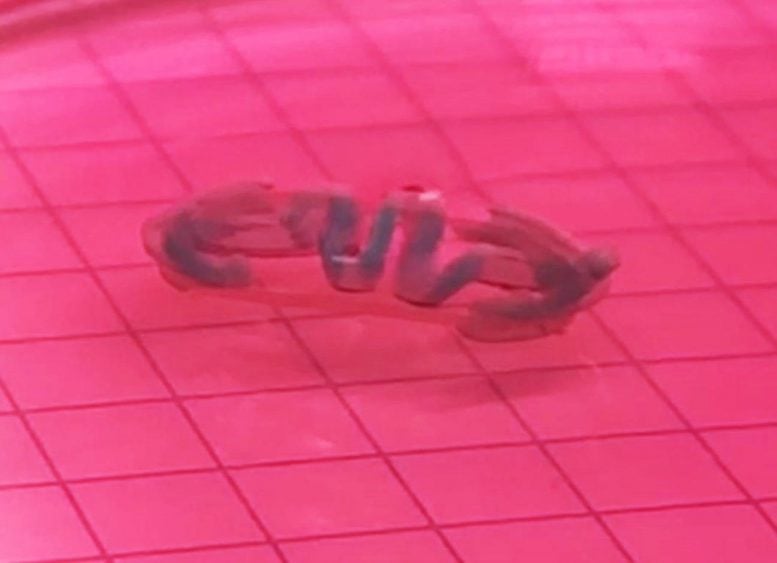Top view of a biobot, consisting of a muscle cell-laden hydrogel and a spring-like skeleton. Credit: IBEC Robotics field aims at mimicking w...
 |
| Top view of a biobot, consisting of a muscle cell-laden hydrogel and a spring-like skeleton. Credit: IBEC |
Now, researchers at the Institute for Bioengineering of Catalonia (IBEC) led by ICREA Research Professor Samuel Sanchez have overcome both challenges and achieved a breakthrough in the field of biobots by using bioengineering tools.
Sanchez and his colleagues at IBEC have applied 3D bioprinting and engineering design for the development of biobots at the cm. range that can swim and coast like fishes, with unprecedented velocities. The key: to use the spontaneous contraction of muscle cells-based materials with a very special compliant skeleton.
Self-training of IBEC Biobots through an engineered innovative skeleton:
While most of the researchers usually work with stiff or tethered scaffolds to prepare artificial robots, researchers at IBEC used biological robots based on a flexible serpentine spring made of a polymer called PDMS, which was designed and optimized via simulations and then printed using 3D technology.
The advantage of this innovative scaffold lies in the improved training and development of the tissue through mechanical self-stimulation upon spontaneous contractions, which creates a feedback loop due to the restoring force of the spring. This self-training event leads to enhanced actuation and larger contraction force in the biobot performance. Such serpentine springs have not been included before in a soft robotic living system.
IBEC Biobots swim at unprecedented speed and coast like fishes:
Besides the capacity to “self-train,” biohybrid swimmer based on skeletal muscle cells developed by IBEC researchers moved at speeds 791x faster than the reported skeletal muscle-based biobots up to date, and comparable with other cardiomyocyte-based bioswimmers (based on heart cells).
 |
| Jakub Lewicki, a bioengineering intern at BioBots, a biotechnology company based at the Pennovation Center, holds a 3-D model of a nose bioprinted in a fluorescent hydrogel. |
Reference: “Biohybrid soft robots with self-stimulating skeletons” by Maria Guix, Rafael Mestre, Tania Patiño, Marco De Corato, Judith Fuentes, Giulia Zarpellon and Samuel Sánchez, 21 April 2021,Science Robotics.







